- This
article has 25 characteristics that might help you understand India. Do not try
to define India because she will always surprise you.
As a Cross Cultural Trainer expatriates often ask define India, what is India? My response is observe, experience and enjoy India.
When you define a country you are creating boundaries beyond which it cannot evolve. In reality, India is ever-changing for e.g. every generation writes a commentary on the Bhagavad Gita with every commentary being different.
This article tries to tell what is India through 25 points. Needless to say it is not exhaustive, because India is not static and the land of 'One Book'.
1. Every nation has a central idea. India’s is Dharma.
Simply put, it means to support, nurture, duty and
righteousness in all interactions. It can also mean “good conduct in
the service of uncompromising national interest.”
Dharma
induces a conviction that man, abiding by its tenets, conforms to the most
efficient ways of right doing and right living. It upholds and sustains.
It
is with reason that motto of the Supreme Court is यतो धर्मस्ततो जयः
‘Yato Dharmah Tato Jayah’, Where there is Righteousness (Dharma),
there is Victory (Jaya).
2. India is one single unit culturally, intellectual and literary. (Vol 5 xvii, The Cultural Heritage of India.)
3. India is a Civilizational State.
4. India has not conquered any country by the power of the sword.
5. The Hindi name for India is Bharat. Bharata means devoted to light as against darkness, said Paramhansa
Yogananda in ‘God talks with Arjuna’. (Volume 1).
6. Vedas were transmitted through the Oral tradition, unique in the world. (Vol 5 pg 13, The Cultural Heritage of India)
7. Diversity is in-built into India’s DNA.
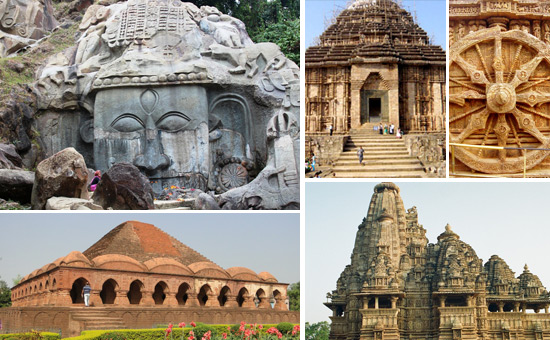 There is more to India than the Taj-East
There is more to India than the Taj-East
8. We continuously absorb new ideas to enrich
our culture. Whilst retaining the core, we accommodate new cultural ideas.
9. India is a country of Pilgrimages, in a way
that unites India like few other. (A New Idea of India).
10. India has not invaded any country in the world. It believes in live and let live.
11. Four religions were founded in India namely Sanatana Dharma, Jaina Darsana, Buddha Vakhya and Sikh Dharma.
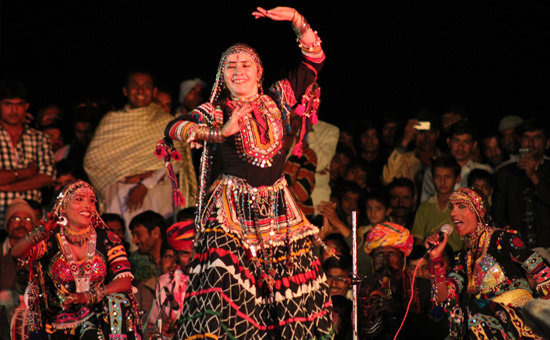 Hungarian (Muslim) Kalbelia Dancer, Jaisalmer Desert Festival.
Hungarian (Muslim) Kalbelia Dancer, Jaisalmer Desert Festival.
12. Various sects, like Vaishnavs, Saivites and Jains, never
fought violent wars like
Protestants and Christians did in Europe.
Maharshi
Aurobindo said
in 1919, “Hinduism is in the first place a non-dogmatic inclusive religion and
would have taken even Islam and Christianity into itself, if they had tolerated
the process.”
13. Tolerance. India has the second largest Muslim
population (2015)
in the world even though the majority population belong to the four religions
founded in India.
14. India gave shelter to the Jews and Parsis centuries ago. India has never persecuted the Jews.
15. Inspite of its citizens belonging to different religions, by and large they co-exist peacefully.
16. The same
DIVINITY exists in all. Simply put, the God that exists in me exists
in you. Swami Vivekananda said, ‘The more all differences disappear, the
more you realize all as one divinity.”
17. India is the land of Ahimsa.
It literally means non-violence. But in Yoga scriptures
nonviolence is to be practiced through thought, speech and action.
18. “From times immemorial, the great aims of human endeavour have been classified in India as
dharma, artha, kama and moksha roughly translated as moral behaviour, wealth,
worldly pleasures and salvation”. (Kautilya, The Arthashastra by L N
Rangarajan).
While Artha has a much wider significance than
merely wealth, the material well-being of individuals was
a part of it. Profit was important, what mattered was how it was earned and
spent.
19. Spirituality is at the core of the Indian Civilization. It allows
multiple spiritual pathways to become one with the Divine.
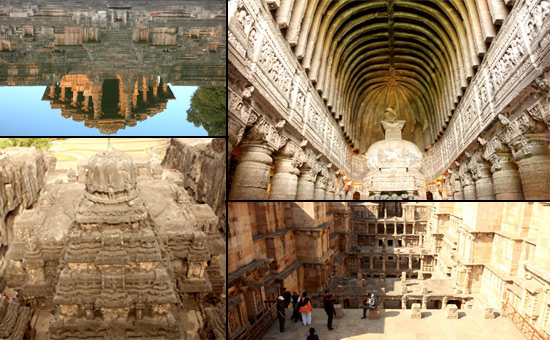 There is more to India than the Taj-West
There is more to India than the Taj-West
20. Of the many British colonies, India is perhaps the only country where democracy is deep rooted.
21. There are nine schools of philosophy. Although each school of philosophy is unique, all of them have certain common characteristics e.g. open mindedness, direct experience, support of logic, pure reasoning etc.
22. Enjoy and experience India, be curious. Do not try to define India and straight-jacket it.
23. Swami Vivekananda said ‘If India wants to raise
herself once more, she must bring out her treasures and broadcast them
amongst the nations of the earth, and be ready to receive what other nations
have to give her. Expansion is life, Contraction is Death.’
24. When Indian
culture and thought went to the Fareast, it blended with local traditions and assumed
local forms, sometimes very different from the original for e.g. in Japan Hindu
deities got Japanese names and looks. Although Buddhist deities predominate
Japanese literature Hindu deities are also quite well known. Table gives Japanese and Hindu names. @
|
Deity
|
Japanese
|
Hindu
|
|
1.
Sea-god
|
Suiten
|
Varuna
|
|
2.
King of gods
|
Taishakuten
|
Indra
|
|
3.
God of success
|
Shoten
|
Ganesha
|
|
4.
God of wealth
|
Bishamon
|
Kuvera
|
|
5.
Goddess of learning
|
Benten
|
Saraswati
|
|
6.
Goddess of fortune
|
Kichijoten
|
Laksmi
|
|
7.
Mahakala
|
Daikoku
|
Siva
|
|
8.
Divine architect
|
Bishukatsuma
|
Visvakaraman
|
@The Cultural Heritage of India Vol V pg. 749 published by the Ramakrishna Mission Institute of Culture, Kolkata.
Noted
Art historian Benoy K Behl wrote, “Most people are not aware that at least a
score of Hindu deities are actively worshipped in Japan. In fact, there are
hundreds of shrines to Saraswati alone.”
Thus
Indian Culture does not impose itself on other
cultures, it gets assimilated or assimilates.
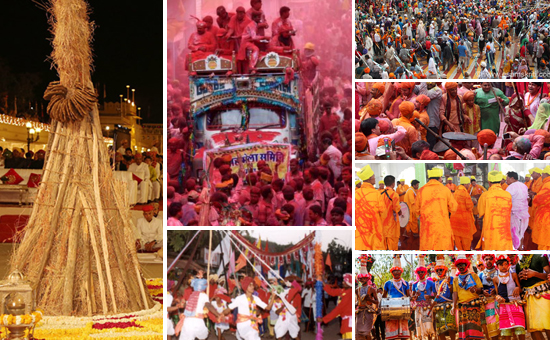 Holi celebrations in India.
Holi celebrations in India.
25. The same festival, Holi, is celebrated in different ways across India. This article
has album links of celebrations across India. All celebrations co-exist, no
form wishes to dominate another.
Swami Vivekananda said in his
1893 Chicago address, “Unity in variety is the
plan of nature, and the Hindu has recognized it.”
This article
was triggered after reading the book ‘A New Idea of India’ by Harsh and Rajeev.
Contribution by Readers
26. We assimilate well into other cultures. And add value. Not an
alpha society. Hence do well anywhere!
27. India is a country of contradictions. Ironies. All have space. All are ubiquitous. All have their own base.
28. Two verses from an ancient Tamil poem.
"Yathum Oore, Yavarum Kelir".
The meaning is, "We have a sense of belonging to every place and everyone is our own." It is inscribed in UN also.
29. India's motto is “Loga Samastha sugino bhavanthu.”
The meaning is, “Let everyone live in peace.” And Vasudhaiva Kutumbakam meaning, “World is one family.”
Also read
1. The
Idea of India by Subhash Kak
2. The
Idea of India by Shonaleeka Kaul
3. What
is India
4. Culture
is at the root of Indian nationhood
5. What is Dharma
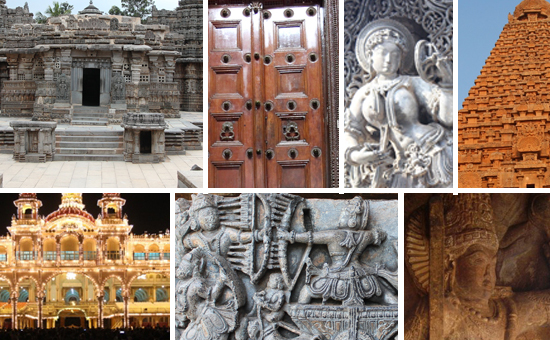 There is more to India than the Taj-South
There is more to India than the Taj-South